Baroque Bentheim Sandstone Mythological Sculpture of the God Hercules Wrestling the Giant Antaeus a Lion Skin Paw Feet and Mask Head Draped Around His Torso
A Sinuous Baroque Bentheim Sandstone Mythological Sculpture of the God Hercules Wrestling the Giant Antaeus a Lion Skin Paw Feet and Mask Head Draped Around His Torso the Long Hair of Antaeus Falling Down His Back
On integral square base now damaged
Attributed to Antwerp Sculptor Jan Pieter van Baurscheit the Elder (1669 - 1728)
Circa 1710
Size: 186cm high - 73¼ ins high - 6 feet 1¼ ins high
On integral square base now damaged
Attributed to Antwerp Sculptor Jan Pieter van Baurscheit the Elder (1669 - 1728)
Circa 1710
Size: 186cm high - 73¼ ins high - 6 feet 1¼ ins high
In Greek myth Antaeus was the son of the god Poseidon and Gaia, earth, who lived in Libya. Heracles or Hercules, wrestled with him while on his way to fetch the golden apples of the Hesperides. Whenever he was thrown he arose stronger than before from his contact with his mother, the earth. Heracles perceiving this lifted him in the air and crushed him to death. The strength shown in the wrestling figures and in Hercules grip can be seen in the sculptor’s working of the taut muscles, tortured facial features and in the compression of Antaeus’s ribcage. At the end of the 17th century the clash between two strong muscular men symbolised stadholder William III’s struggle against the King of France.
Jan Pieter Baurscheit the Elder (1669 - 1728) was an Antwerp sculptor and architect who was often engaged by patrons in the Dutch republic. The son of a mayor he was born in Wormersdorf and moved to Antwerp where he was apprenticed to Pieter Scheemackers the Elder and joined the Guild of St Luke in 1694. Appointed assistant director of the Antwerp mint in 1709, sculptor to the King in 1714 and to the Emperor in 1717, he established one of the leading workshops for sculpture in Antwerp which was continued after his death by his son Jan Pieter Van Baurscheit the Younger (1699 - 1768).
Van Baurscheit the Elder is also known for his religious sculpture which can be seen in the churches around Antwerp, such as a baroque carved wood pulpit in the church of Saint Carolus Borromeus. Other works by him are held in the collections of the Royal Museums of Fine Arts in Brussels. However, his sculpture in Bentheim sandstone known as ‘Bentheim Gold’ by the Dutch merchants, was mostly carried out for gardens in the Netherlands. An engraving by Heindrik de Leth circa 1730, shows the pleasure gardens of Bosch en Haven, a country estate belonging to Jacob Alewyn Ghyzen near Haarlem, with the sculpture of Hercules and Cacus by Van Baurscheit placed against clipped box hedges. This sculpture is now in the collections of the Rijksmuseum.
Jan Pieter Baurscheit the Elder (1669 - 1728) was an Antwerp sculptor and architect who was often engaged by patrons in the Dutch republic. The son of a mayor he was born in Wormersdorf and moved to Antwerp where he was apprenticed to Pieter Scheemackers the Elder and joined the Guild of St Luke in 1694. Appointed assistant director of the Antwerp mint in 1709, sculptor to the King in 1714 and to the Emperor in 1717, he established one of the leading workshops for sculpture in Antwerp which was continued after his death by his son Jan Pieter Van Baurscheit the Younger (1699 - 1768).
Van Baurscheit the Elder is also known for his religious sculpture which can be seen in the churches around Antwerp, such as a baroque carved wood pulpit in the church of Saint Carolus Borromeus. Other works by him are held in the collections of the Royal Museums of Fine Arts in Brussels. However, his sculpture in Bentheim sandstone known as ‘Bentheim Gold’ by the Dutch merchants, was mostly carried out for gardens in the Netherlands. An engraving by Heindrik de Leth circa 1730, shows the pleasure gardens of Bosch en Haven, a country estate belonging to Jacob Alewyn Ghyzen near Haarlem, with the sculpture of Hercules and Cacus by Van Baurscheit placed against clipped box hedges. This sculpture is now in the collections of the Rijksmuseum.
Baroque Bentheim Sandstone Mythological Sculpture of the God Hercules Wrestling the Giant Antaeus a Lion Skin Paw Feet and Mask Head Draped Around His Torso
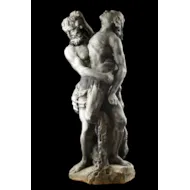
SOLD
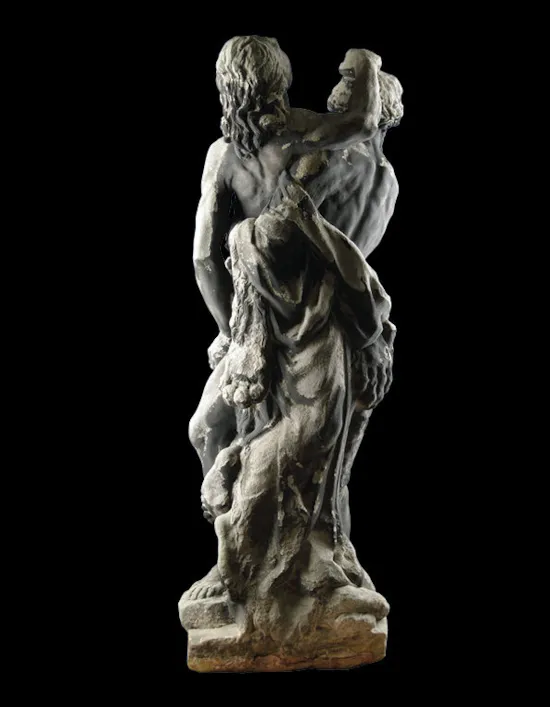
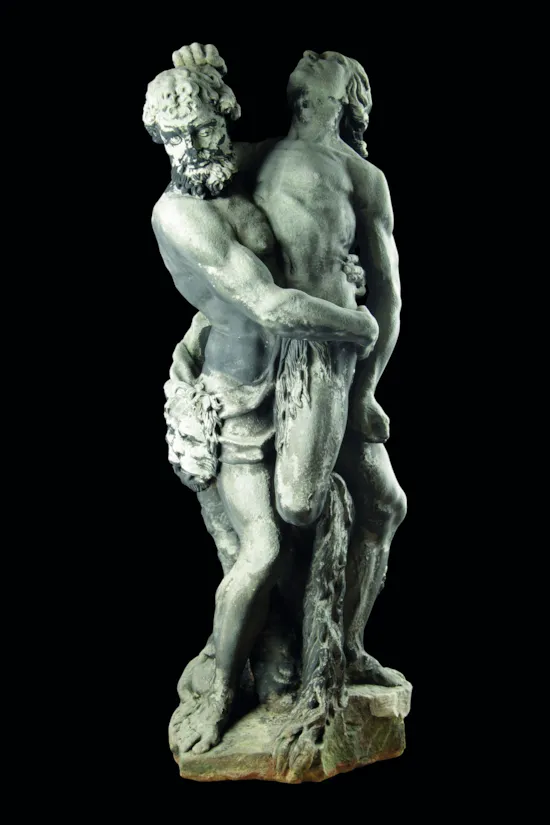
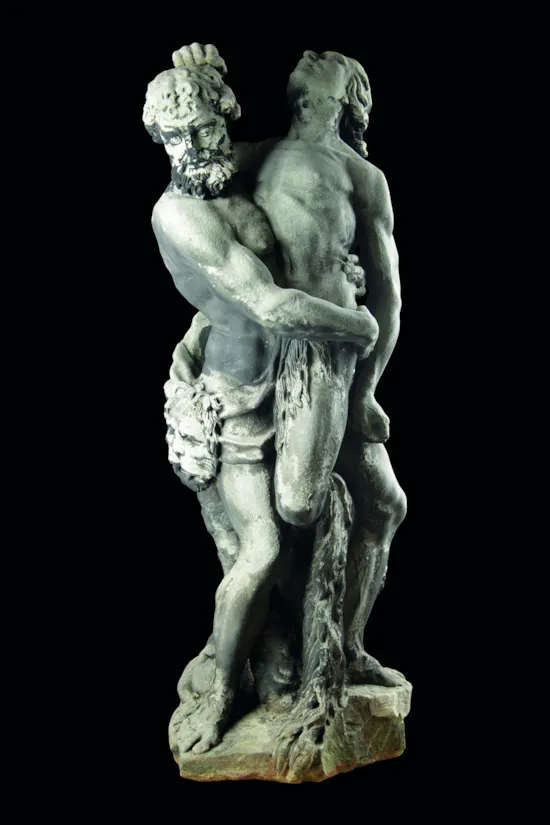
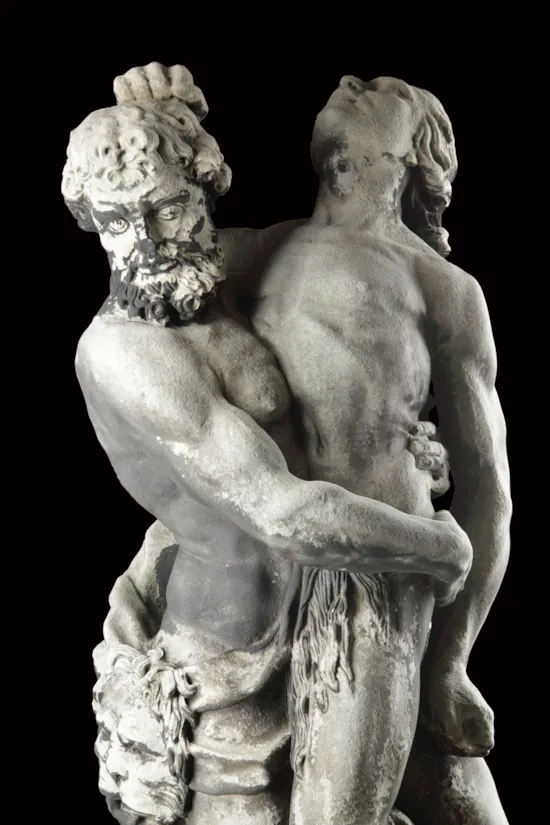
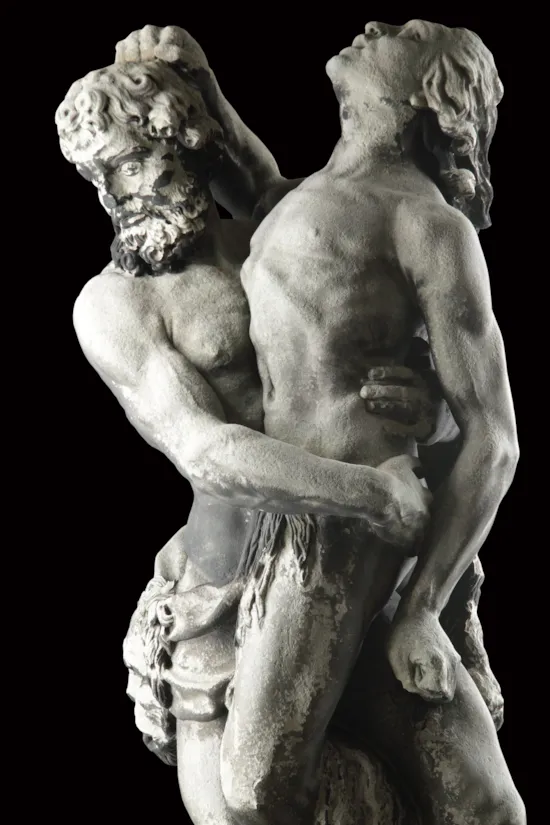
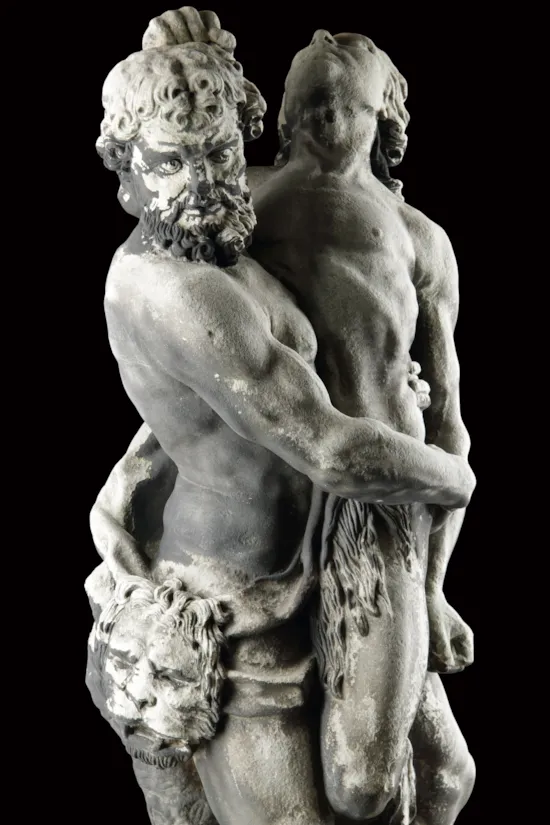
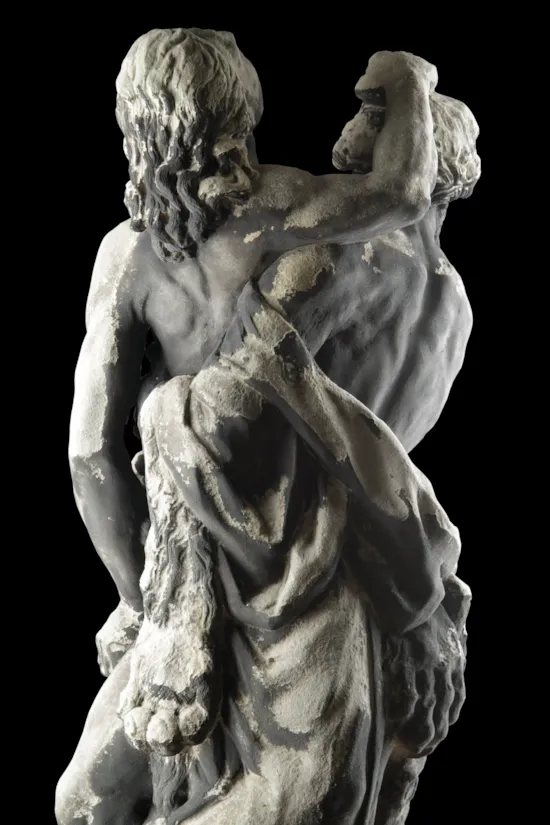







YOU MAY ALSO LIKE

